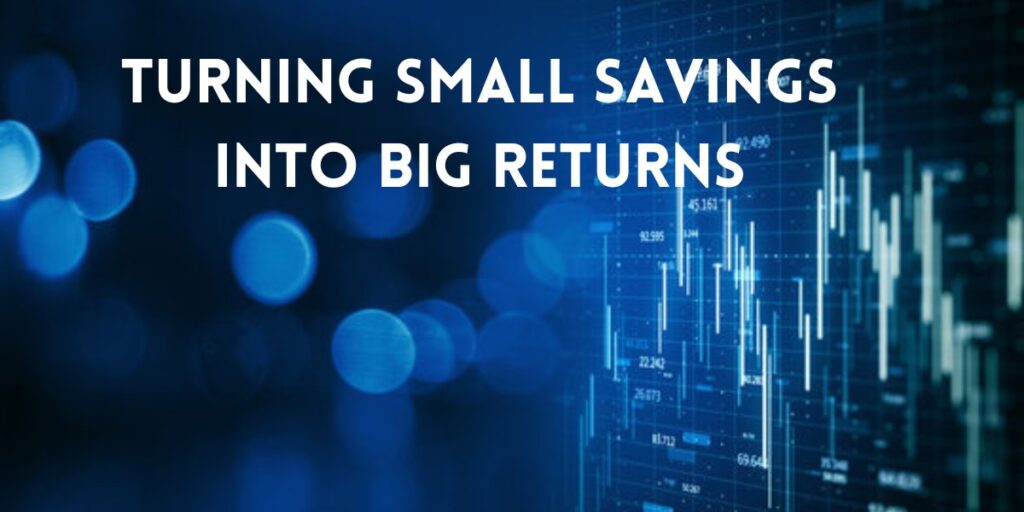
The Power of Compounding: Turning Small Savings Into Big Returns
The power of compounding is one of the most effective tools for growing wealth over time. It’s often called the “eighth wonder of the world” because of its ability to turn small, consistent savings into significant returns. Compounding works by reinvesting earnings, allowing your money to grow exponentially over time. This principle applies to savings, investments, and even personal growth, making it a cornerstone of financial success.
Here’s how the power of compounding works and how you can use it to build wealth.
- What Is Compounding?
Compounding occurs when the returns earned on an investment are reinvested, generating additional returns over time. This process creates a snowball effect, where the initial investment grows faster with each passing year.
How It Works
Initial Investment: You start with a certain amount of money.
Reinvested Returns: Earnings from the investment are added to the principal amount.
Growth Over Time: The larger the principal becomes, the greater the returns in subsequent periods.
For example, if you invest $1,000 at an annual return rate of 8%, it will grow to $1,080 in the first year. In the second year, the 8% return applies to $1,080, resulting in $1,166.40. This cycle continues, increasing the growth rate over time. - The Key Factors of Compounding
Several factors influence the effectiveness of compounding. Understanding these elements can help you maximize its benefits.
Start Early
Time is the most critical factor in compounding. The earlier you start saving or investing, the more time your money has to grow.
For instance, someone who starts investing at age 25 will accumulate significantly more wealth than someone who starts at age 35, even if they invest the same amount each month.
Consistency
Regular contributions amplify the power of compounding. Even small, consistent investments add up over time, making it easier to reach your financial goals.
Interest Rate or Return
The higher the rate of return on your investments, the faster your money will grow. While higher returns often involve more risk, a diversified portfolio can help balance risk and reward. - The Rule of 72
The Rule of 72 is a simple way to estimate how long it will take for an investment to double, given a fixed annual rate of return. Divide 72 by the annual return rate to calculate the time required.
For example, if your investment grows at 6% per year, it will double in approximately 12 years (72 ÷ 6 = 12). - Compounding and Saving
You don’t need to be a seasoned investor to benefit from compounding. Even a basic savings account can harness its power.
High-Yield Savings Accounts
Placing your money in a high-yield savings account ensures that your savings earn interest over time. While the returns may not be as high as investments, it’s a safe and reliable way to grow your money.
Emergency Funds
An emergency fund stored in a compounding account can serve as both a financial safety net and a growing asset. - Compounding and Investing
Investing offers greater potential for leveraging compounding compared to traditional savings.
Stocks and Mutual Funds
Investing in stocks or mutual funds allows your earnings to grow through dividends and capital appreciation. Reinvesting dividends back into the portfolio enhances the compounding effect.
Retirement Accounts
Tax-advantaged retirement accounts like 401(k)s and IRAs are ideal for compounding because they allow your investments to grow tax-free or tax-deferred. Over decades, this can result in substantial growth. - Avoiding Pitfalls
While compounding is powerful, there are common pitfalls that can reduce its effectiveness.
Fees and Expenses
High fees and expenses can erode your returns. Choose investments with low expense ratios to maximize growth.
Withdrawals
Taking money out of your investments interrupts the compounding process. Avoid unnecessary withdrawals to let your money grow uninterrupted.
Debt and Interest
Debt can work against you because of compound interest. High interest loans, like credit cards, can grow exponentially, making it harder to save and invest. - Examples of Compounding
To understand the potential of compounding, consider these examples:
Example 1: Starting Early vs. Starting Late
Investor A: Starts saving $200 per month at age 25 and stops at age 35. Total contribution: $24,000.
Investor B: Starts saving $200 per month at age 35 and continues until age 65. Total contribution: $72,000.
Assuming an annual return of 8%, Investor A ends up with more money at age 65, despite contributing less. This highlights the importance of starting early.
Example 2: Small Savings Add Up
Saving just $5 a day, or $150 a month, can grow to over $150,000 in 30 years at an 8% return. Small, consistent savings make a big difference over time - How to Harness the Power of Compounding
Making the most of compounding requires strategic actions and a disciplined approach.
Automate Your Savings and Investments
Set up automatic transfers to your savings or investment accounts to ensure consistent contributions.
Increase Contributions Gradually
As your income grows, increase the amount you save or invest to accelerate the compounding process.
Stay Patient
Compounding takes time, so stay committed to your financial plan and avoid making impulsive decisions based on short-term market fluctuations.
Compounding is a simple yet powerful way to grow your wealth over time. By starting early, staying consistent, and making smart financial choices, you can turn small savings into significant returns. With discipline and patience, the power of compounding can help you achieve your financial goals and secure a brighter future.